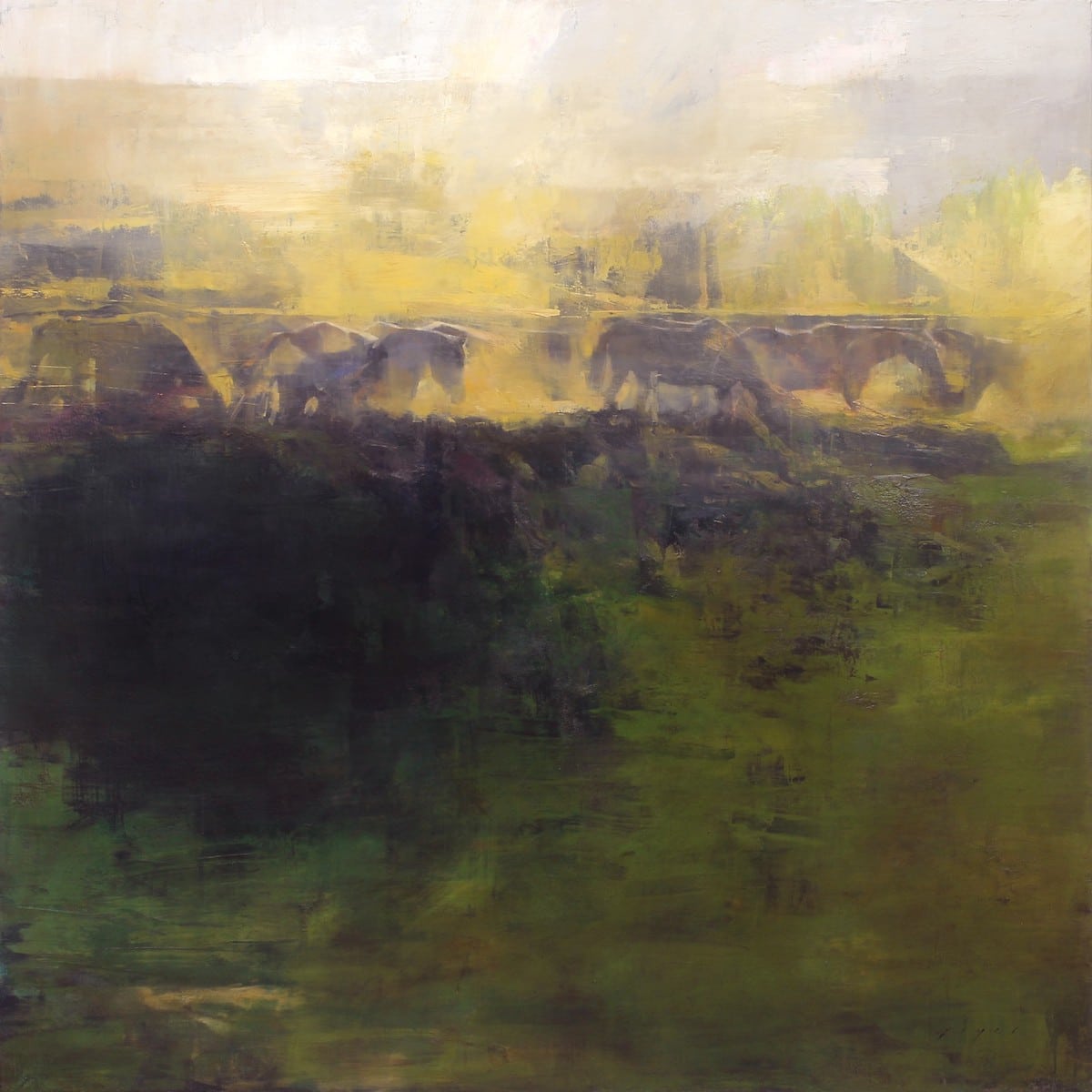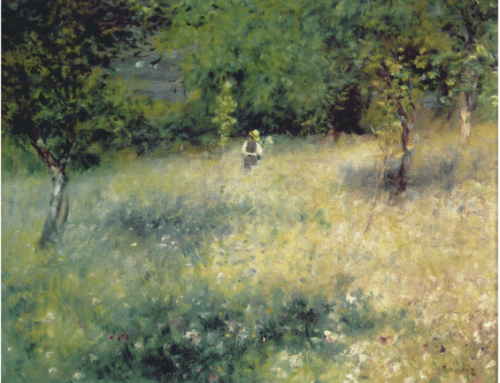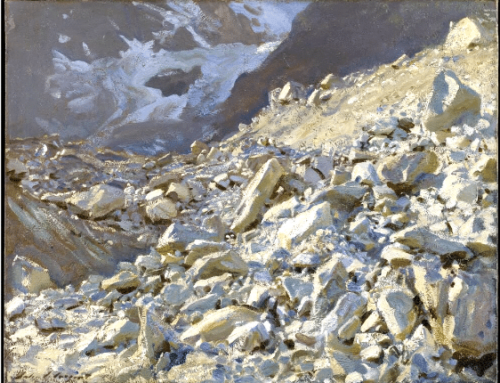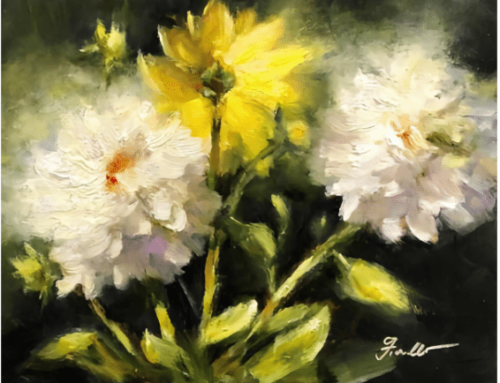Abstract landscape painting incorporates the techniques of 20th century Abstract Expressionism within the framework of (often plein air) painting. It’s like representational painting for people who appreciate abstract art.
Why do it? First, let’s establish that abstraction isn’t always “just” a series of marks, shapes, and colors that hang together in a composition. Abstraction can convey emotion and meaning, and it doesn’t have to be two-dimensional. Abstract painters can conjure believable space with as much depth and feeling as any realist can.
The difference is that abstraction achieves this exclusively through the handling of the materials, the chosen marks, colors, shapes, and edges – rather than (or in addition to) what’s being depicted. With abstraction, what is left out is always as important as what is left in.
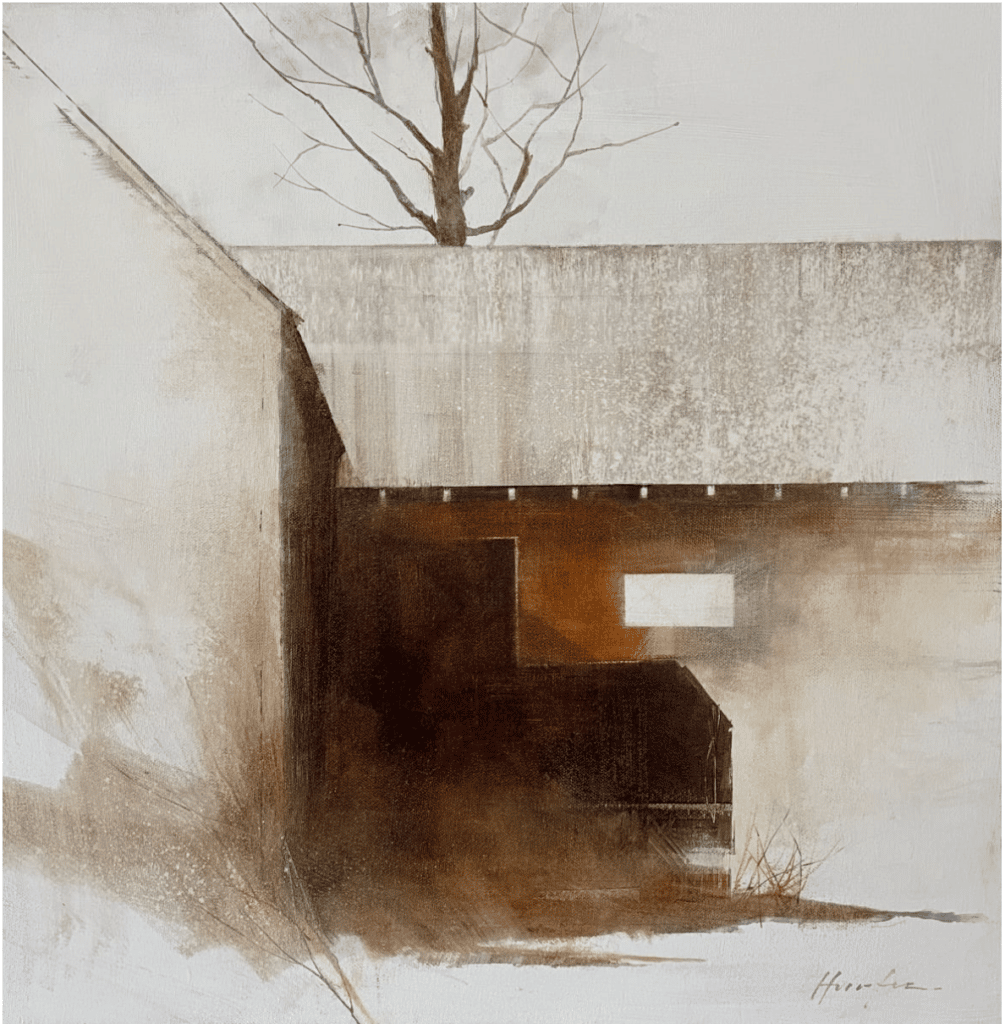
Charlie Hunter, Milford Barns, oil and acrylic on canvas. Here, elements of abstraction – the limited (sepia) color palette, textured and gestural application (particularly in the lower left hand corner and the roof), and the overall ghostly handling (surrounding a central void where the doors would be) all contribute to a sense of the loss of iconic rural America. Here, abstract design is used expressively and made to serve meaning. Check out these videos for more on Hunter’s take on “rule breaking” landscape design.
It comes down to this: blending abstraction and representation allows an artist to combine description with expression in various degrees. Doing so is a major trend in figurative work right now, as it has been in landscape painting since at least the late 1980s.
The question becomes, how much do you want to privilege expression over description or vice verse?
Since the late 1960s, the contemporary German artist Anselm Keifer has been painting abstract landscapes on a par with epic tragic poetry. His massive paintings referencing the killing fields and former sites of Nazi concentration camps hold huge amounts of spiritual and historical resonance.
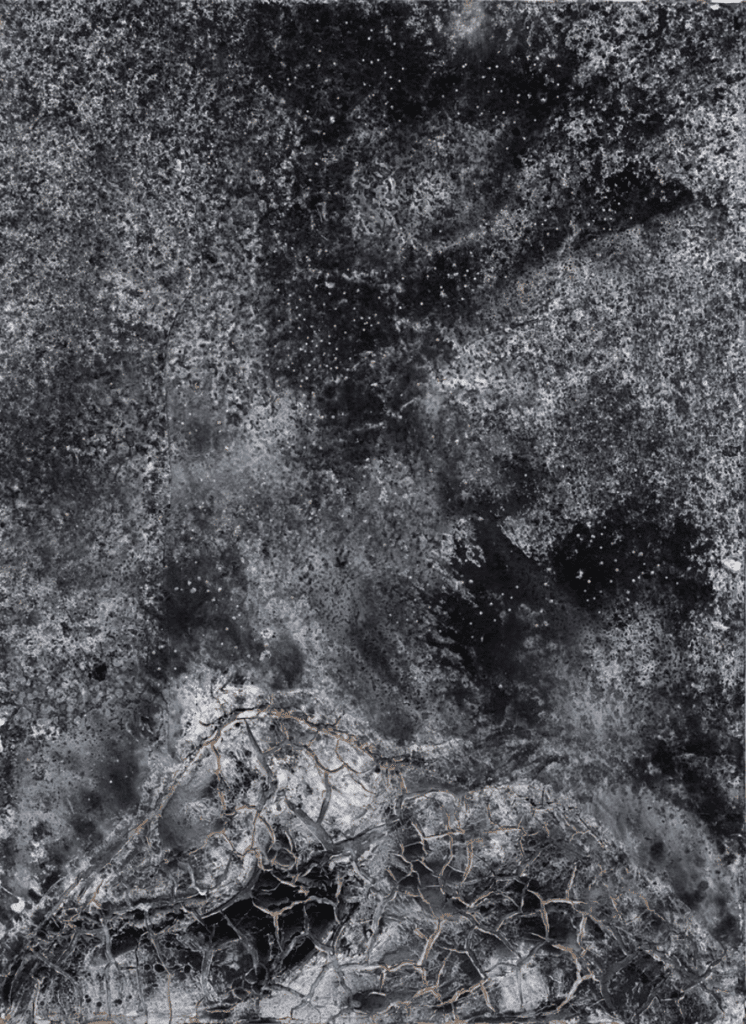
Anslem Keifer, The Secret Life of Plants
Either way, done well, abstract landscape painting is more than a trendy blend of techniques and styles. Don’t let the reluctance to let go of accuracy – the need to “get it right” – keep you from exploring the uses of abstraction in your work.
Seth Tummins Wins Plein Air Prize
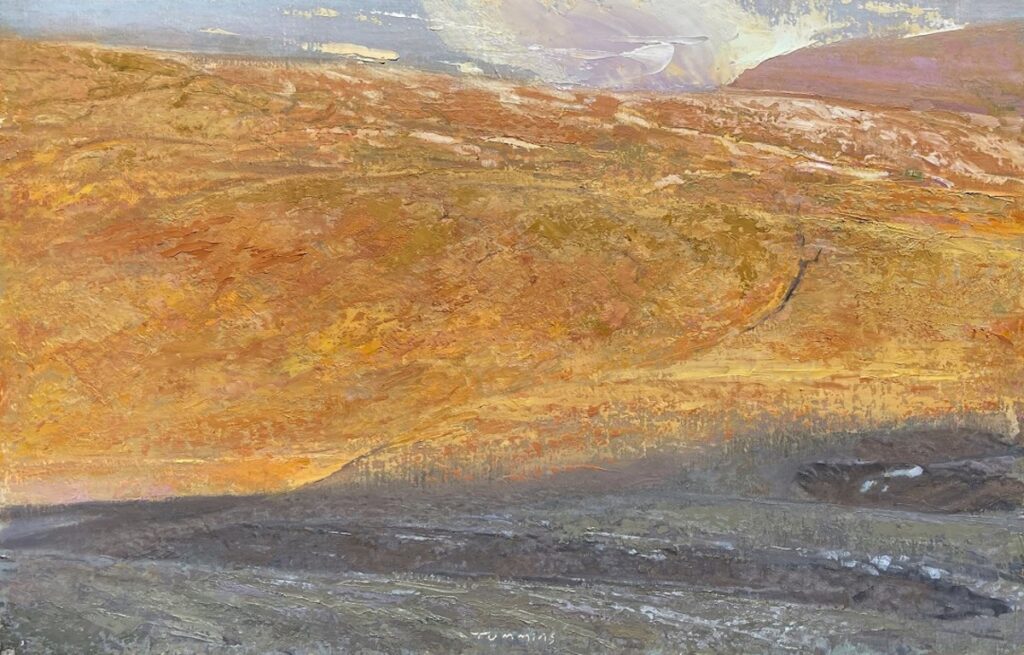
Seth Tummins, Beauty Mark
Seth Tummins‘ Beauty Mark was awarded Third Place in the April 2002 Plein Air Salon, an open, monthly competition that culminates in a grand prize award ceremony at the annual Plein Air Convention and Expo. Tummins’ landscape makes good use of several techniques borrowed from abstraction: gestural mark-making with the palette knife, especially in the area above the mountain pass, the strong simple and dynamic shapes, the minimal detail, and the enhanced color choices (note the subtle use of a vibrant pink-violet throughout) all add up to a lively and intensely textured surface without sacrificing too much realism or the illusion of three-dimensional space.
It’s exciting to see landscape painters merging apparent spontaneity and the expressive qualities of paint with observational rendering. For those yet to venture out, a whole new world of painting lies over that threshold.
In the Paint,
Chris

